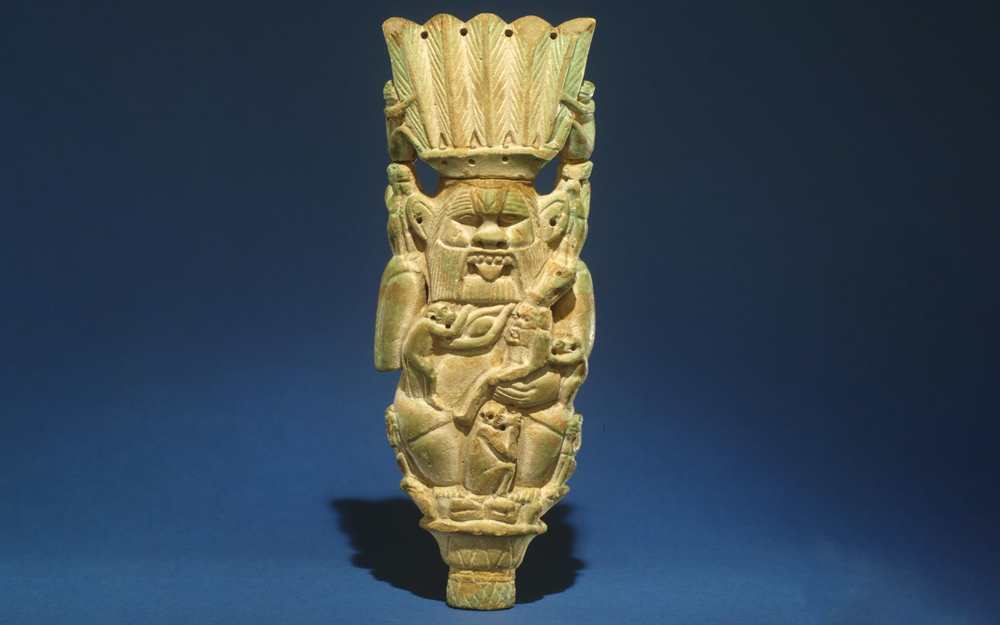Ancient Egypt: From Discovery to Display
Witness the journey artifacts take on their way to museum display—from excavation to conservation, to storage and research.
Upper Level
Included with Museum Admission

Witness the journey artifacts take on their way to museum display—from excavation to conservation, to storage and research.
Upper Level
Included with Museum Admission

Explore themes like kingship, deities, daily life, and the afterlife. See Egyptian artifacts in visible storage, and learn more about ancient Egypt and Penn’s excavations there.
The Penn Museum has been involved in archaeological research in Egypt for more than a century. Most of the material in the collection was excavated by Penn archaeologists, and come from excavation sites such as tombs, temples, and towns throughout Egypt.
The exhibition highlights not only the history of how these artifacts came to the Museum, but also how the objects are stored, used for research, and the meticulous skill and expertise involved in conserving and preparing them for display.
Although the Penn Museum houses one of the largest collections of Egyptian material in the U.S., when archaeologists excavate today, everything found must stay in Egypt.
Please Note: This gallery contains human remains.





A “false door” is an architectural element in an Egyptian tomb that served as a magical doorway for the ka (or life force) of the deceased. The Egyptians believed that the ka could enter and exit the false door to receive the offerings left in front of it by visitors to the tomb. This false door came from the tomb chapel of Irty-Ptah, a priest of Ptah and a “Scribe of Divine Offering” in the Temple of Ptah at Memphis. E14318
Sitepehu, the individual represented by this block statue, lived during the reign of the female pharaoh Hatshepsut and served as an overseer of priests. The hieroglyphic inscriptions on the front and side of the statue consist of funerary prayers that invoke the gods Osiris and Inheret. These inscriptions also convey information about Sitepehu’s identity, religious beliefs, and social standing. E9217
This statue represents the god Amun wearing a flat crown (missing its tall plumes), a broad collar, and a short kilt fastened with a tyet amulet. Each hand holds an ankh symbol, representing “life.” This statue’s facial features suggest it may be a representation of the pharaoh Tutankhamun in the form of the god Amun––an homage to young pharaoh’s influential role in restoring Amun's worship after the reign of the “heretic” king Akhenaten. E14350
During the Third Intermediate Period (1075-656 BCE), brightly painted wooden stelae were popular. This stela honors Tasheryt, a woman who held the important position of singer in the temple of the god Amun. Wearing a flowing, sheer gown, she raises her hands in adoration as she faces the falcon-headed god Re-Horakhty. The solar disk atop his head highlights his role as a sun god. Before him is a table piled with offerings. Six vertical columns of text above identify the god and the woman. E2043
With hundreds of gods, the Egyptians appealed to certain deities for help with deeply personal issues such as healing, fertility, and love. Evidence of this widespread devotion can be found in objects like this faience plaque representing Bes, a popular deity accompanied by lively monkeys. Originally, metal rings were attached to the holes at the top of the plaque. When shaken, the object produced a rattling sound believed to ward off malevolent forces that could bring harm to the household. E14358
To make it stable enough for display, an Egyptian broad collar (31-27-303) came into Conservation to be restrung. Although the beads were in excellent condition, they were on modern cotton thread which was starting to degrade. The collar has six alternating rows of blue and black faience beads and a final row of teardrop beads with falcon-headed terminals. To keep track of the strings, the ends were color coded using markers and each strand used a different dental needle.

Museum Shop
Take home this cuddly version of the fearsome Bastet, Egyptian goddess of fertility and joy.

Penn Today, May 22, 2023
Article by Louisa Shepard
As we prepare to launch the construction phase of the renovation of our Ancient Egypt and Nubia Galleries, University of Pennsylvania students created films using 360-degree cameras to document the process. The films focus on conservators, curators, and senior archivist, telling their stories of engaging with the collection while working in their spaces. Photo by Eric Sucar.